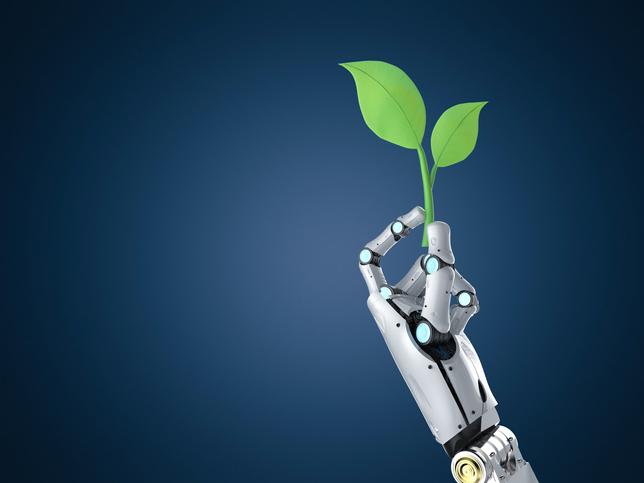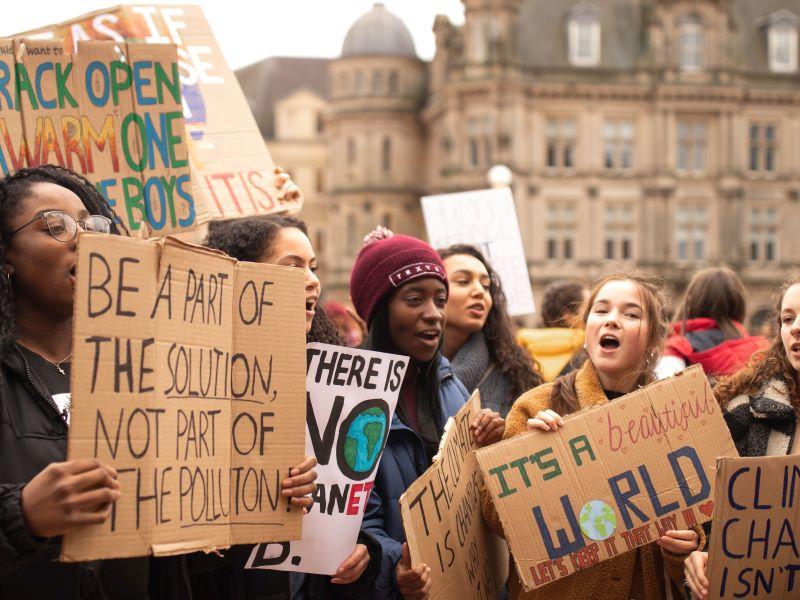Artificial intelligence is seen as an almost magical solution to complex problems in fields as diverse as computer science and art, and from finance, economics, natural and medical sciences to linguistics.
In the education sector, especially engineering and computer sciences, AI is a vibrant and attractive subject for students; AI brings possibilities for developing new intelligent tools and building successful careers. Across disciplines, AI is integrated into systems to improve learning methods and allow better interaction between professors and students. AI can be used to develop innovative teaching and learning practices that raise the quality of education.
- Spotlight collection: a greener future for higher education
- Greener life science labs: the challenge to save energy and reduce waste
- Building futures: how estates directors can deliver net zero
As it becomes ubiquitous, why not also consider how to make AI green and sustainable?
Teaching AI alongside its environmental impact
The workshops or seminars that introduce notions of artificial intelligence to our students could also address the risks and challenges that AI poses for the environment.
These are, for the moment, opaque to the public and most students, even those who are fascinated by humanoids, electric cars, androids and other AI-enabled miracles. This is indeed the consequence of courses given by academics and educators who focus only on the advantages and applications of AI and not its limitations, risks and challenges.
Students should be encouraged to ask:
- What are the costs and risks of implementing AI?
- What risks does the exponential development of this technology pose to our environment and our dear planet?
From our experience in the department of engineering of the University of Luxembourg, the teaching of AI and its uses should also highlight its drawbacks and limitations, especially since most users of this advanced technology are replacing, without thinking too much (because they are uninformed about the consequences), conventional algorithms and solutions with AI.
How does AI impact the environment?
Learning outcomes for AI courses should take its costs and risks into consideration.
Big data is not free
AI relies on a large amount of data to learn and reproduce models adapted to the studied system. In other words, the effectiveness of its results depends on the quantity as well as the quality of the data. Complex problems require enormous amounts of data and, of course, exceptionally long and tedious calculations. For example, during the training phase for image recognition software, the algorithm analyses many images; each pixel, including its intensity and colour, is considered to detect patterns. Once the software is trained, many calculations are still needed (pixels, distances, pattern comparisons, normalisations, gradients, etc). The computing power requirements for AI are linked to the data amount and are growing exponentially. Data collection and storage are not free, either; they consume personnel and IT resources. Moreover, often, the data collection needs sensors, generally connected by advanced communication technologies. These technologies represent between 6 and 10 per cent of global electricity consumption, and 4 per cent of our greenhouse gas emissions. This figure increases by 5 to 7 per cent each year. In 2018, OpenAI found that the amount of computational power used to train the largest AI models had doubled every 3.4 months since 2012, which translates into exponential energy consumption over years. Home office equipment accounts for about 9 per cent of the average household electricity bill. Office equipment accounts for about 11 per cent of electricity usage in the tertiary sector. Irresponsible use of AI can increase these numbers significantly.
AI algorithms are expensive
Computer time for AI requires powerful and even gigantic computers capable of processing big data and making intelligent decisions in real time. This explains the high electrical energy consumption and CO2 emissions of computers when running AI programmes. In this context, it is also important to mention that manufacturing a computer can emit almost 940kg of greenhouse gases, without mentioning its assembly and transport! Let’s go over an example: Twitter uses AI to classify tweets in real time, displaying the ones that drive the most engagement. It needs huge computer power to estimate each tweet’s impact in real time: it counts the words; identifies the language, slang, punctuation, keywords and grammar errors; and links it to the context (time, country, hot topics, audience, etc).
Metals cost
Metals such as silver and gold play a significant role in developing new AI technologies. Indeed, the excellent electrical performance of computers and numerical products requires precious metals, such as gold, silver, platinum and palladium. The environmental impact of metallurgy is made mostly at the time of the extraction of ores, which consumes a lot of energy and water. For example, gold mining requires an average of 140,000 litres of water per hour, which is the annual water consumption of a three-person household! This huge quantity of polluted water is then stored and partially reprocessed. Its absorption by the water table can cause irreversible environmental damage, such as pollution of waterways and arable land.
Students need to understand AI’s limitations and its advantages
The impact of the energy voracity of AI on the planet, which is already in pain, is growing. It’s crucial to make students aware of the advantages but also of the limitations of AI. Integrating green AI into teaching programmes is an effective tool to raise awareness among students who are, and will be, the users and developers of AI. As a practical tip for making AI more sustainable at the university level, we could encourage students not to dive directly into AI-based solutions but to carefully consider conventional approaches and algorithms, which require less energy consumption. Also, projects that are based on AI must be followed by a study on its impact on the environment.
Inès Chihi is assistant professor in electrical measurements and sensor technology in the department of engineering, and Inma Peral is a research facilitator in the Faculty of Science, Technology and Medicine, both at the University of Luxembourg.
If you would like advice and insight from academics and university staff delivered direct to your inbox each week, sign up for the Campus newsletter.




comment1
(No subject)